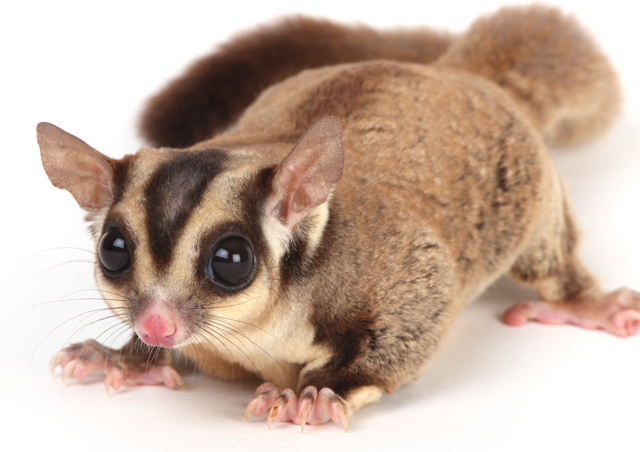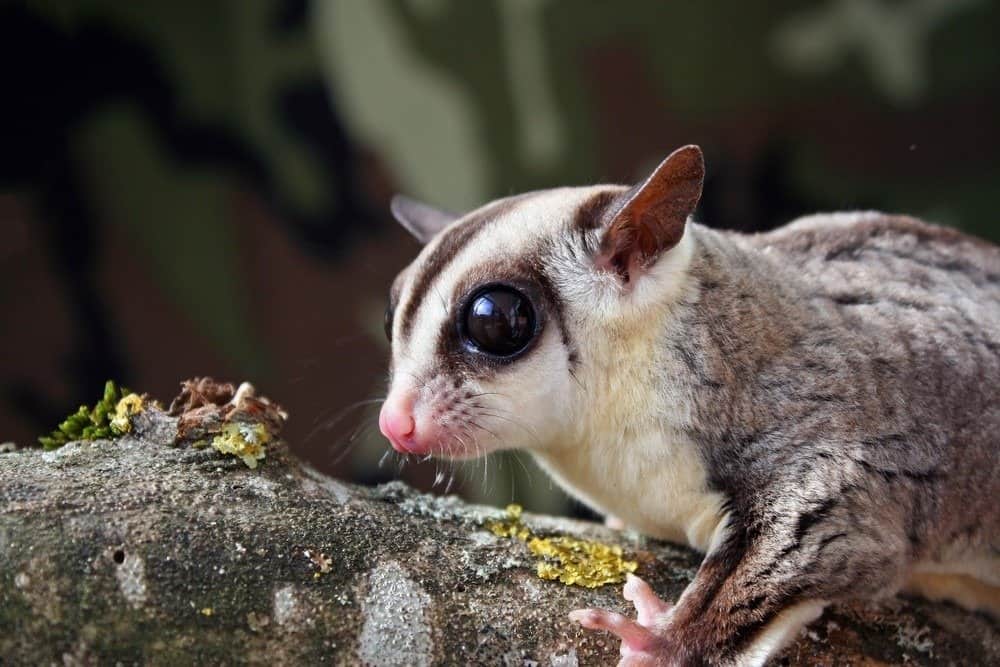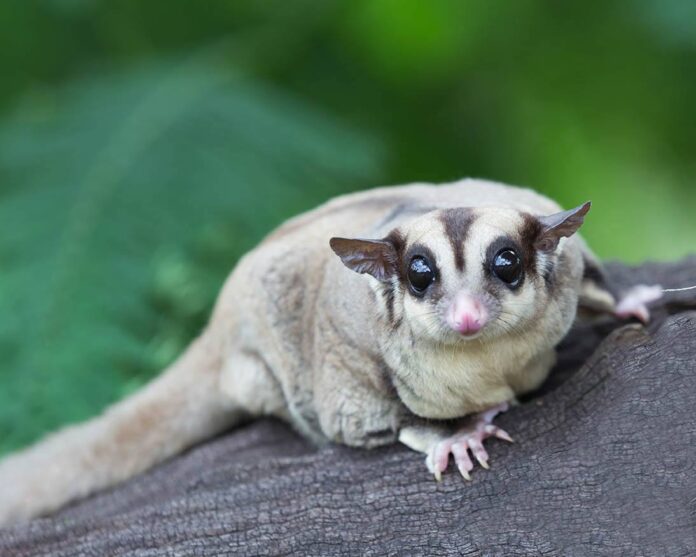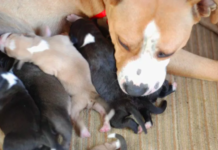Last Updated on July 2, 2021 by Fumipets
Sugar gliders are popular exotic pets (which are regarded as any pet that is not a cat, a dog, or a farm animal). They are little, charming, and one-of-a-kind marsupials that are indigenous to Australia and portions of Indonesia, and they’re also endangered. Their bodies are similar in appearance to a squirrel’s, having grey fur and black patterns on their bodies. In addition to this, they have what is known as gliding membranes, which are thin, skin-like structures that stretch from the front to rear limbs on each side of their bodies, almost like wings, and which aid them in their movement between trees.
Sugar gliders are excellent pets because they are lively, inquisitive, and sociable. However, they do need regular handling in order to remain tamed, as well as plenty of room to run about in. Additionally, they follow a highly specific diet. Sugar gliders are not suitable for first-time pet owners, and you should devote significant time and effort to learning all you can about the species before getting one. Then you may anticipate to spend many hours a day caring for your animal.

Sugar Glider Behavior and Temperament
Pet sugar gliders are popular among those who think them to be lovable and amusing. They are swift, like climbing, and will glide from one location to another if the available space enables them to do so. Furthermore, since they are nocturnal creatures (meaning that they are most active at night), they prefer to sleep in their nests during the daytime.
Because sugar gliders are gregarious creatures, it is normally preferable to have more than one, preferably one male and many females in a single environment.
Most of the time, it’s advisable to keep them away from other types of pets in the home since they might harm one another.
If you want your glider to form a strong link with you, regular human contact is essential. Make it simple to engage with your sugar glider throughout the day by allowing it to ride in your shirt pocket or a pouch that hangs around your neck is a good idea. In the event that your glider is not used to being touched, it may take some time for it to become cuddly while you are around. The majority of the time, sugar gliders do not behave aggressively as pets, but they will bite if they feel threatened or scared. As a result, while dealing with them, it is essential to be patient and compassionate.
Furthermore, sugar gliders are very vocal pets that make a variety of sounds to communicate with their owners when they are agitated, afraid, hungry, and other emotions. The majority of the time, when they are upset, they will offer an audible warning before trying to bite someone. If you accidentally wake up a sleeping glider, you may hear this sound.
Sugar gliders are often not able to be potty trained, although they are otherwise rather clean animals to keep as pets. It’s rather simple to keep their cage in good condition after it’s been put up. The maintenance of a healthy diet and social interactions are the two most important aspects of their care.
Housing requirements of the Sugar Glider
A pair of sugar gliders should be kept in an enclosure that is 24 inches wide by 24 inches deep by 36 inches high at the very least. Because of the climbing and gliding activities of these little marsupials, larger space is always preferable, and height is more important than floor space for them.
To make climbing easier, the cage wire spacing should be no more than a half-inch wide, and the bars should be horizontal to allow for easy access. The inside of the cage should be filled with a variety of toys as well as a closed exercise wheel (to prevent the glider’s tail from being entangled). Climbing branches, ropes, and ladders will also give possibilities for play, exercise, and exercise. Place a nest box toward the top of the cage so that your glider has a secure place to rest and sleep when it feels threatened.
Gliders are intelligent and have been known to figure out how to unlock basic latches on cage doors. Make sure the lock on the cage door is securely fastened. Insert newspaper or another recycled paper product into the bottom of the cage to ensure that it is not hazardous if consumed. Cedar shavings should be avoided since they have a strong aroma that might cause respiratory discomfort in these tiny animals. At the very least, once a week, replace the shavings and thoroughly clean the cage’s surfaces and toys with soap and water. The majority of ailments that plague sugar gliders are caused by their living environment being unclean.
Keep the cage away from direct sunlight and draughts, and maintain a temperature range of 70 to 90 degrees Fahrenheit in the room where it is kept.

Nutrition and Diet
It is necessary to follow the nutritional needs of sugar gliders. It is nectar and sap from trees that provide the sugar glider with its nutrition in the wild. Sugar gliders are omnivorous, which means they consume both plants and animals. Consequently, in addition to nectar and sap, they eat fruit, insects and even tiny birds or rodents, among other things.
Variations of the homemade Bourbon’s Modified Leadbeater (BML) diet are quite popular among sugar glider owners who keep them as pets. Honey, calcium powder and baby cereal are all often used in these recipes to ensure that your glider has the right nourishment. Fresh fruits and vegetables should be consumed in moderation, accounting for less than 10% of total caloric intake, since many of them are deficient in critical vitamins, minerals, and protein, and contain mostly water. In the morning and at night, many owners lay out meals in little food bowls for their animals. Some sugar gliders, on the other hand, prefer to graze rather than consume a whole meal at once. So don’t be afraid if there is any food left over, but be sure to throw it away before the next meal to avoid it rotting.
Consult your veterinarian for the optimal amount of food to give your glider, since this might vary depending on the glider’s age, size, and degree of activity. Additionally, always have a water dish or bottle in the cage, which should be refilled at least once a day.
Common Health Issues
If sugar gliders are awoken and moved out of their cages during daylight, they are very vulnerable to stress reactions.
When faced with a stressful situation, they have even been known to self-mutilate (biting and scratch themselves). Sugar gliders are very sensitive animals, and housing them in a group that doesn’t get along or supplying them with a limited enclosure are two huge stresses for them. If you see any indications of self-mutilation, like missing patches of fur, call your veterinarian immediately to get them checked out. They can assist in determining the problem and making recommendations for lifestyle improvements.
Sugar gliders are also susceptible to bacterial and parasite illnesses, which may be fatal. For example, giardia, a protozoan parasite, may induce dehydration, lethargy, and weight loss in susceptible ones. The majority of bacterial and parasite diseases in sugar gliders are caused by improperly cleaned fruits and vegetables, so be sure to thoroughly clean any items you offer them.
Furthermore, malnutrition causes a wide range of problems in sugar gliders, as previously stated.
A malnourished glider may be skinny, sluggish, and have pale gums as a result of inadequate nutrition. Low calcium and blood sugar levels are two of the most prominent causes of this condition. This often leads in anaemia, which may progress to more significant health problems, including kidney, liver, and metabolic bone disease, which can cause bone fractures if not addressed.
Also, sugar gliders are prone to tooth problems as a result of the high sugar content in their diet.
If your glider is suffering from teeth difficulties, you may notice that it is eating less or that it has a foul odour emanating from its mouth. A visit to your veterinarian for a teeth cleaning will almost certainly be necessary, and your veterinarian may provide you with oral hygiene recommendations.
Before purchasing a sugar glider, it is critical to confirm that there is a veterinarian in your area who is experienced in treating this species. It is suggested that you get a wellness assessment once a year.

Purchasing a Sugar Glider
Sugar gliders are prohibited in a few places, including Alaska, Hawaii, and California, since they are considered a nuisance. However, even if your state permits them, you should double-check that they are lawful at the local level. Aside from that, they need licenses to be kept in some places.
If you want to purchase a glider, look for a reputable breeder or rescue group first.
A licence from the Department of Agriculture should be obtained by a breeder. Avoid making a purchase via the internet if you are unable to interact with the animal before making a decision. Also, attempt to chat with other individuals who have purchased an animal from the same vendor.
The vendor should be able to offer detailed information on the animal’s origins, health history, and temperament before selling the animal to you. Make an appointment to meet with the animal before to bringing it home, and be on the lookout for any red signals, such as lethargy, difficulty moving about, or irregular excrement. Expect to spend between $100 and $500 on average; younger gliders will be more expensive than older gliders.

















